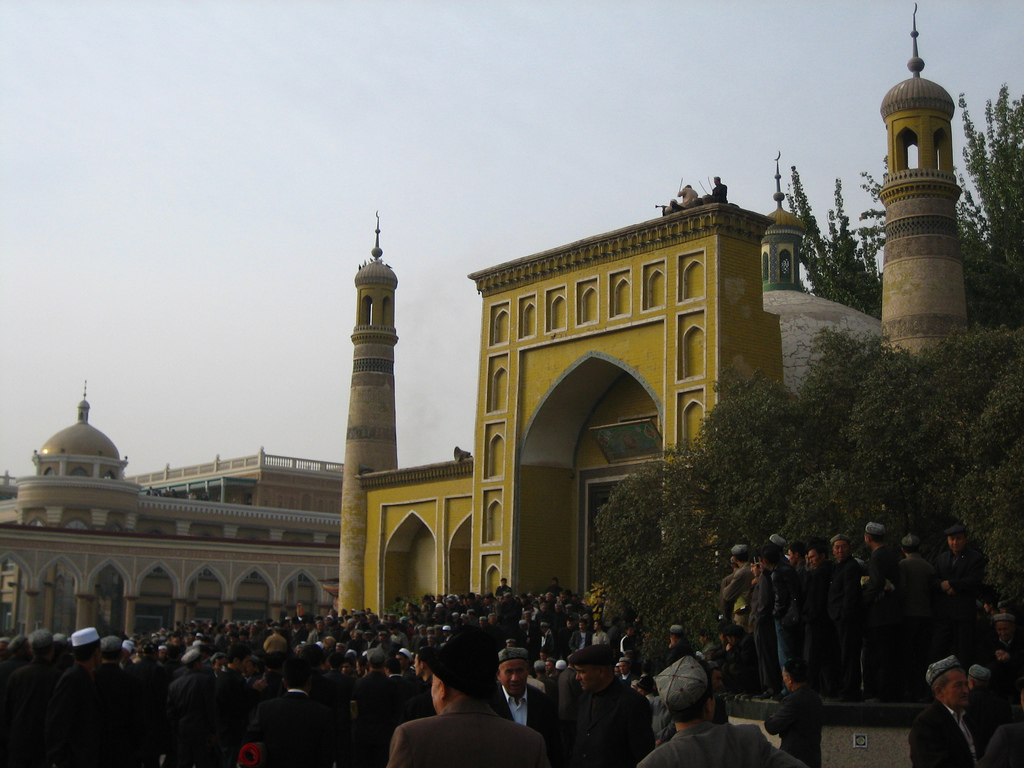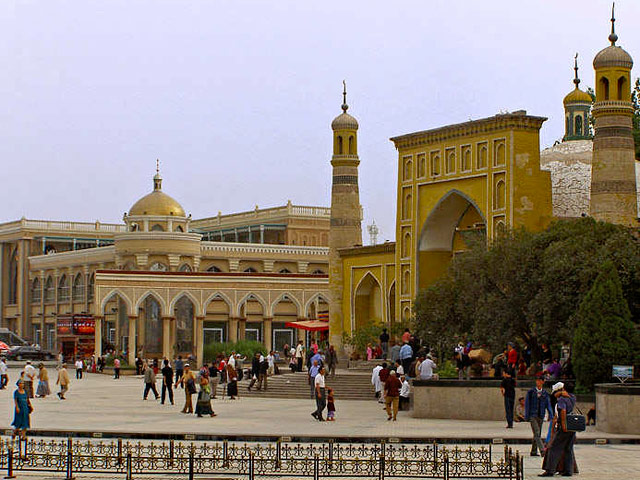
Wednesday, September 24, 2014
Saturday, September 6, 2014
Kashgar Ughurstan Id Kah Mosque
Id Kah Mosque, Kashgar
 | |
| Basic information | |
|---|---|
| Location | Kashgar, China |
| Geographic coordinates |  39°28′20″N75°59′03″ECoordinates: 39°28′20″N75°59′03″ECoordinates:  39°28′20″N 75°59′03″E 39°28′20″N 75°59′03″E |
| Affiliation | Islam |
| Region | Xinjiang |
| Ecclesiastical or organizational status | Mosque |
| Architectural description | |
| Architect(s) | Saqsiz Mirza |
| Architectural type | Mosque |
| Completed | 1442 |
| Specifications | |
| Capacity | 20,000 |
| Minaret(s) | 3 |
... -Abakh Hoja Tomb-old town of Kashgar-Id Kah Mosque (Breakfast,Lunch

http://saveeastturk.org/commons/image/contents/id-kah.jpg
Id Kah Mosque
Thursday, September 4, 2014
mosques Cairo Egypt
Cairo Mosques
- Altunbugha al-maridani Mosque
- Amr Ibn El-Aas, Mosque of
- El-Aqmar (Gray Mosque)
- Aqsunqur or Blue Mosque
- As-Salih Talai Mosque
- Aytmishi Mosque
- Archaic Mosques
- Barquq Khanqah/Mausoleum
- Barquq Khanqah/Madrasa
- Ashraf Barsbay Complex
- Baybars El-Jashankir Khanqa
- al-Burdayni, Mosque of
- El-Gawhara el-Lala Mosque
- El-Ghuri Mosque
- al-Guyushi, Mosque of
- El-Hakim Mosque
- Sultan Hassan Complex
- El-Hussein Mosque
- Ibn Tulun Mosque
- Sultan al-Ashraf Inal Complex
- El-Ishaqi Mosque
- Jamal al-Din Mosque
- Mahmud Pasha Mosque
- Mohammad Ali Mosque
- El-Mu'ayyad Mosque
- An-Nasir Mohammed Mosque
- Qaytbay Funerary Complex
- Qurqumas Funerary Complex
- Sultan Qala'un Complex
- Refa'i Mosque
- Sangar Salar Mosque
- Sayyida Zeinab Mosque
- Shaykhu Mosqu
- Silhdar Mosque
- Suleyman El-Silahdar Mosque
- Suleyman Pasha Mosque
- Taghri Bardi Complex
- Mosque of Ilgay al-Yusufi
Fayoum Mosques
Read more: http://www.touregypt.net/hassanmosque.htm#ixzz3CPrzps9a
The Sultan Hassan Mosque Madrasa
The Sultan Hassan Mosque and madrasa (School) is considered stylistically the most compact and unified of all Cairo monuments. The building was constructed for Sultan Hassan bin Mohammad bin Qala'oun in 1256 AD as a mosque and religious school for all sects. It was designed so that each of the four main Sunni sects (orthodox Muslim, or Sunni rites, consisting of Shafite, Malikite, Hanefte and Hanbalite) has its own school while sharing the mosque. The cornices, the entrance, and the monumental staircase are particularly noteworthy.

The madrasa was originally introduced to Egypt by Saladin to suppress non-orthodox Muslim sects. There is a difference in congregational as opposed to Madrasa style Mosques such as the Sultan Hassan. While some congregational Mosques have been used as schools, those designed for that purpose generally have smaller courtyards (Sahn) and the buildings are more vertical, allowing for classroom space.
Many consider the Sultan Hassan Mosque to be the most outstanding Islamic monument in Egypt. It is of true Bahri Mameluke origin, built of stone, and while it is entirely different in design, it shares a like boldness to the Ibn Tulun Mosque.
There is no architectural indulgence here, but rather self confidence in its clarity of execution and restraint. In allowing separate schools for the four Sunni rites, the Sultan Hassan is based on a classical cruciform plan, meaning that the Sahn opens from each of its sides into a separate liwan, which is an enormous vaulted hall, each serving one of the rites.
While the design of liwans predates Mohammed (Peace and Prayers Be Upon Him), it was the Mamelukes who arranged them in the Cruciform manner, and as in the Sultan Hassan Mosque, advanced this architecture with the addition of a domed Mausolea. However, this Mausolea is empty, for Sultan Hassan died several years prior to its completion.
Structurally from the outside, the Mosque is very impressive, holding its own with its impressive cornice and the protruding verticals of its facade, even though it stands in the shadows of the massive Citadel. As one enters the Mosque from Sharia el Qalaa, there is an impression of height, especially from the towering doors decorated in a Mameluke fashion. Even during the Mameluke error in Cairo, building space was at a premium. Thus the outer walls are somewhat askew, in order to fit the available lot, but these designers had a wonderful way of creating the impression of uniform cubistic effect inside regardless.
Read more: http://www.touregypt.net/hassanmosque.htm#ixzz3CPrGromB
Monday, September 1, 2014
Subscribe to:
Posts (Atom)


